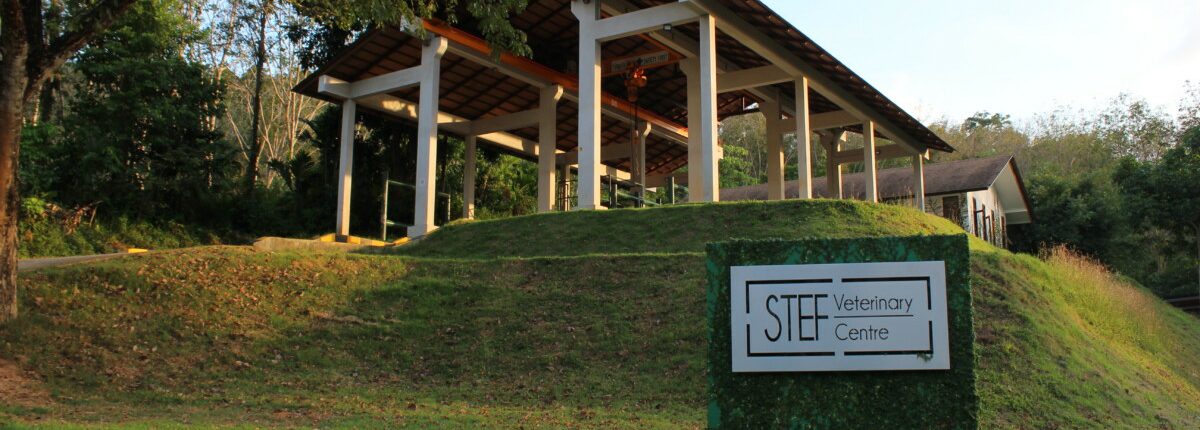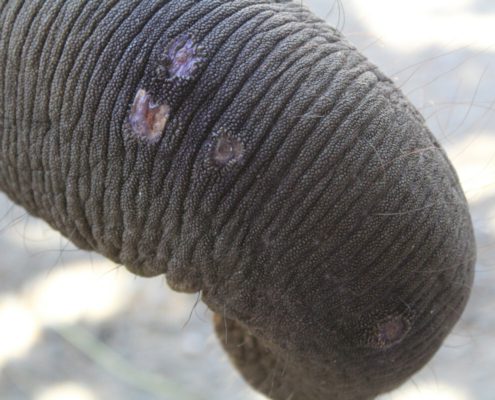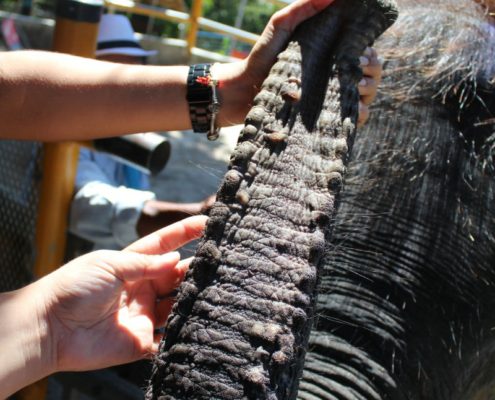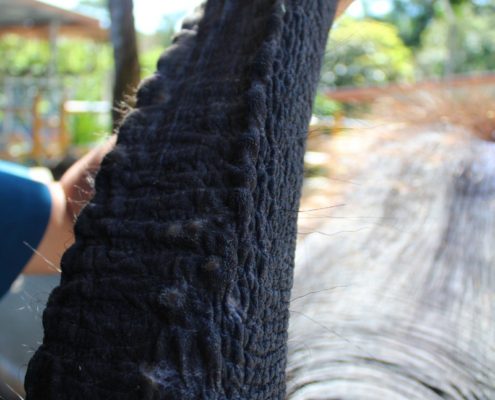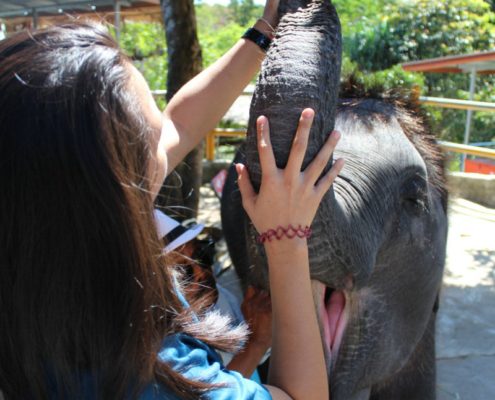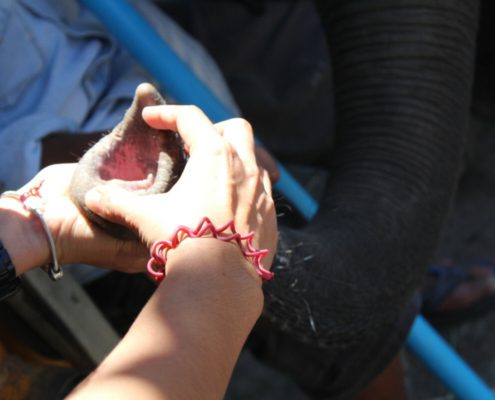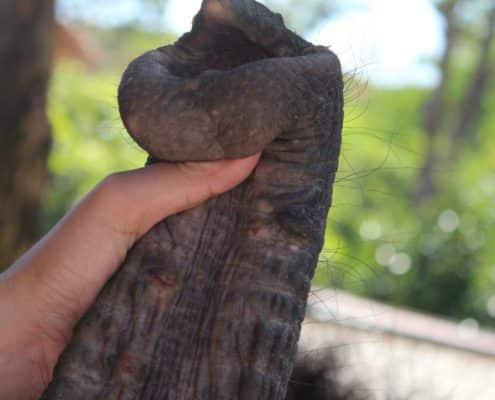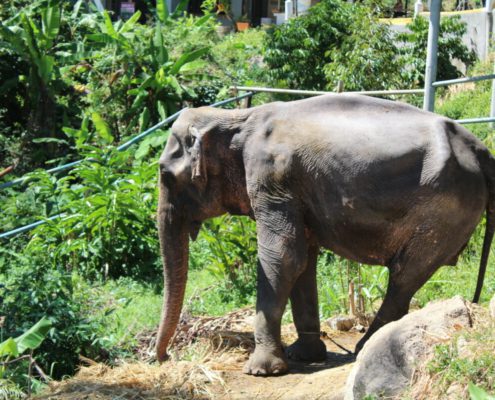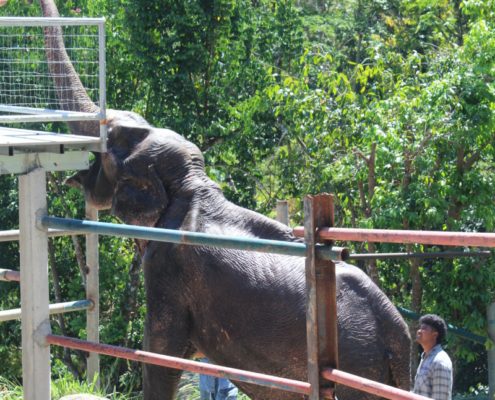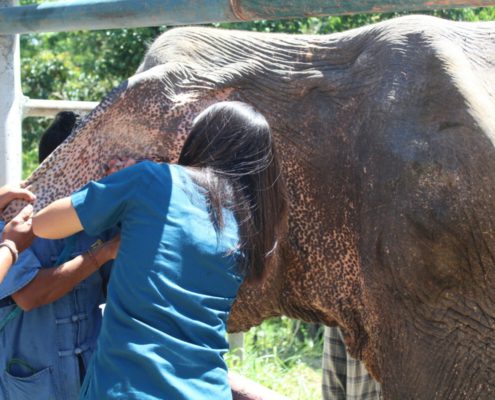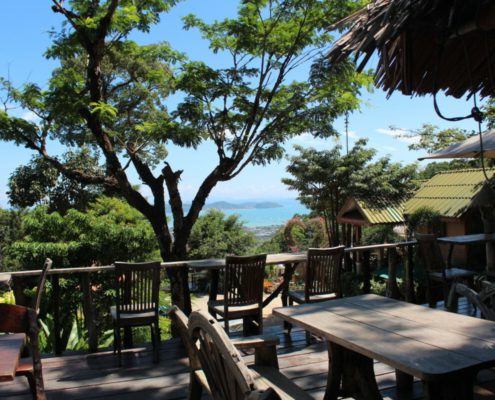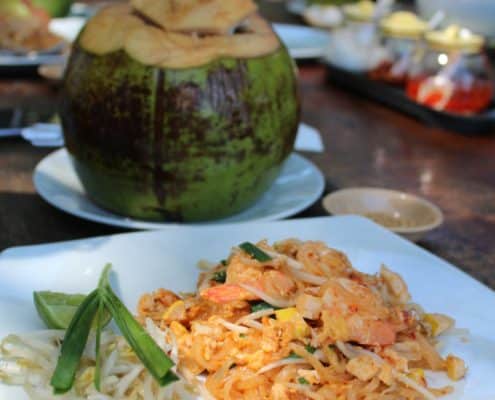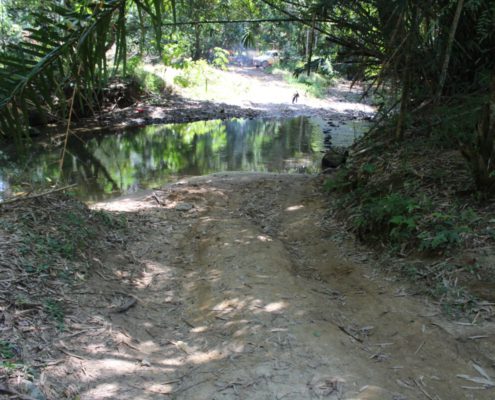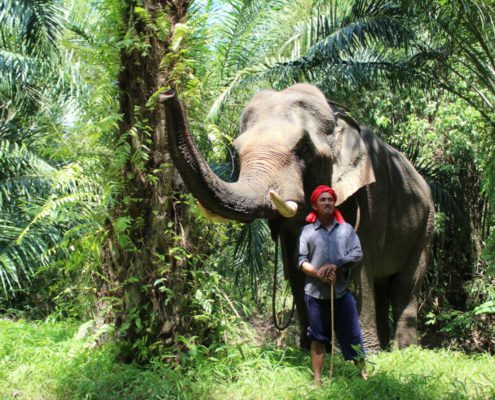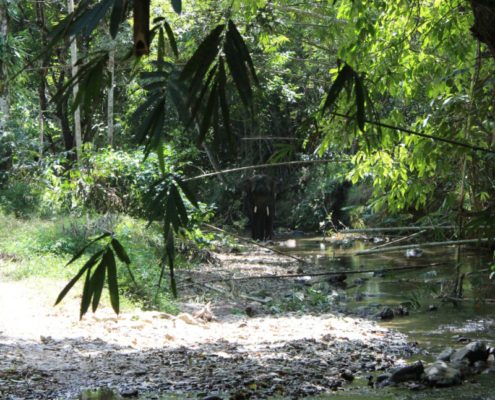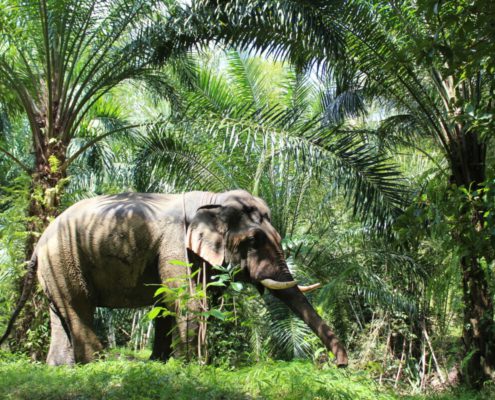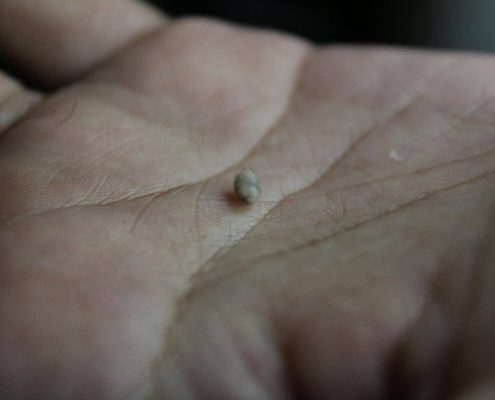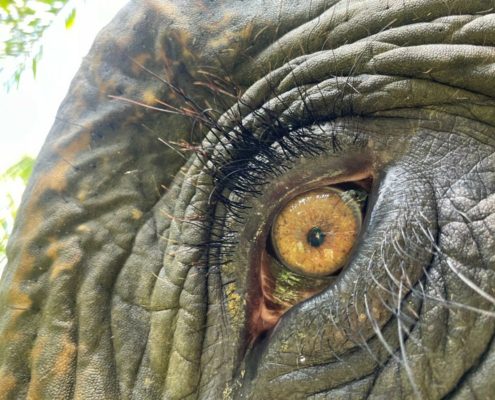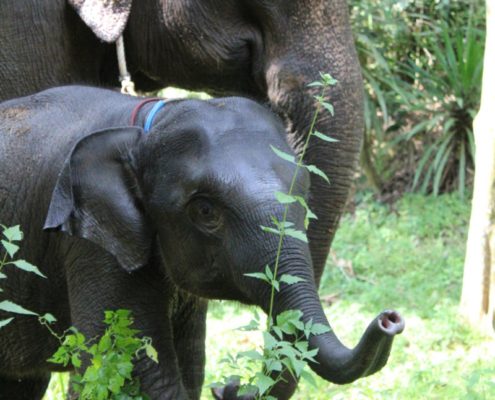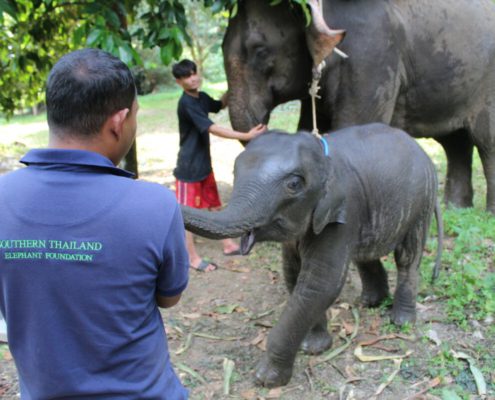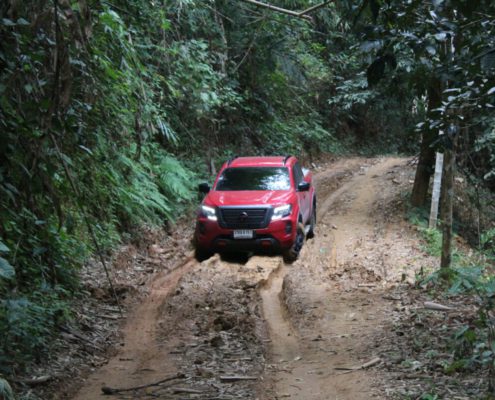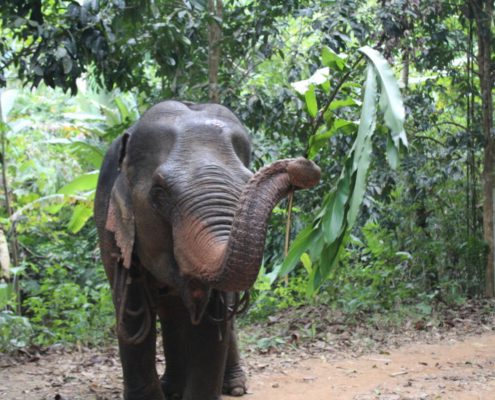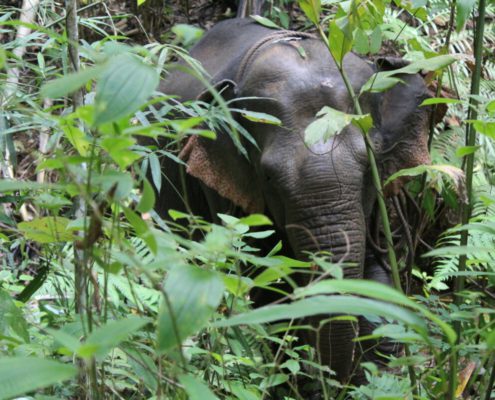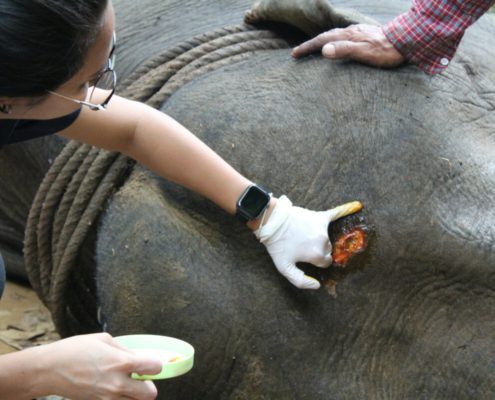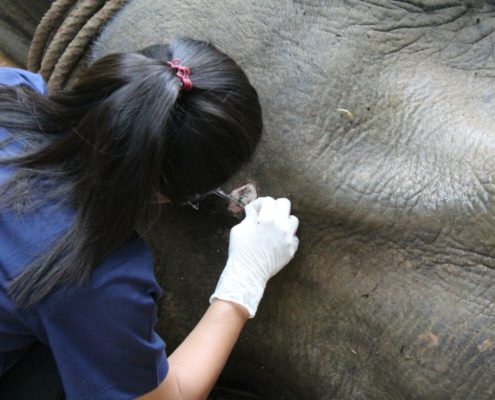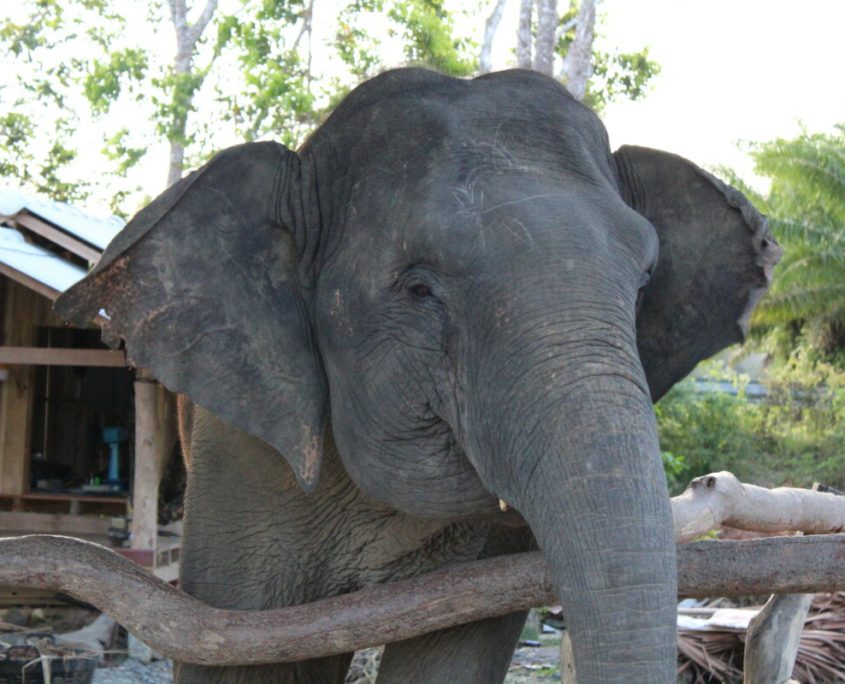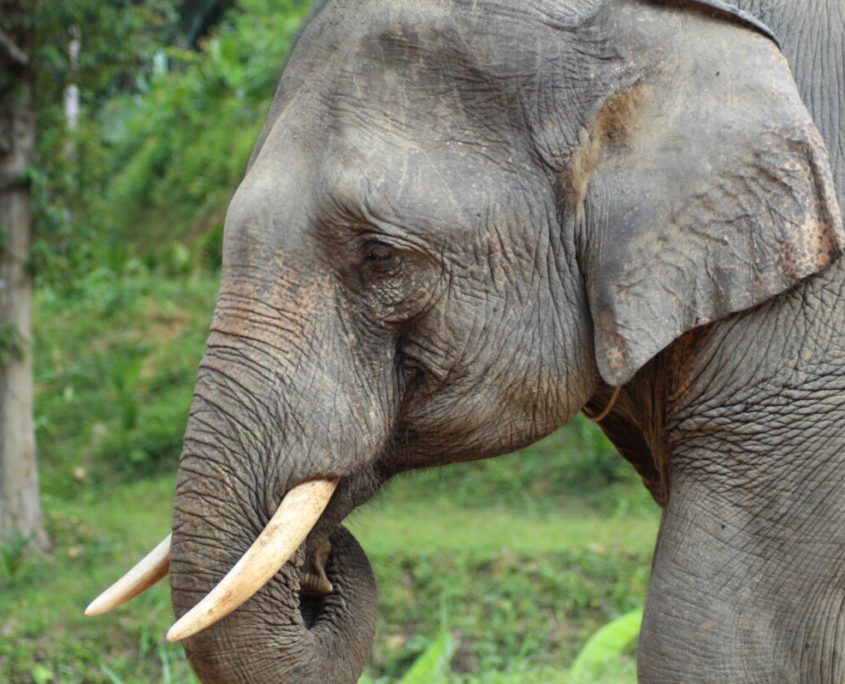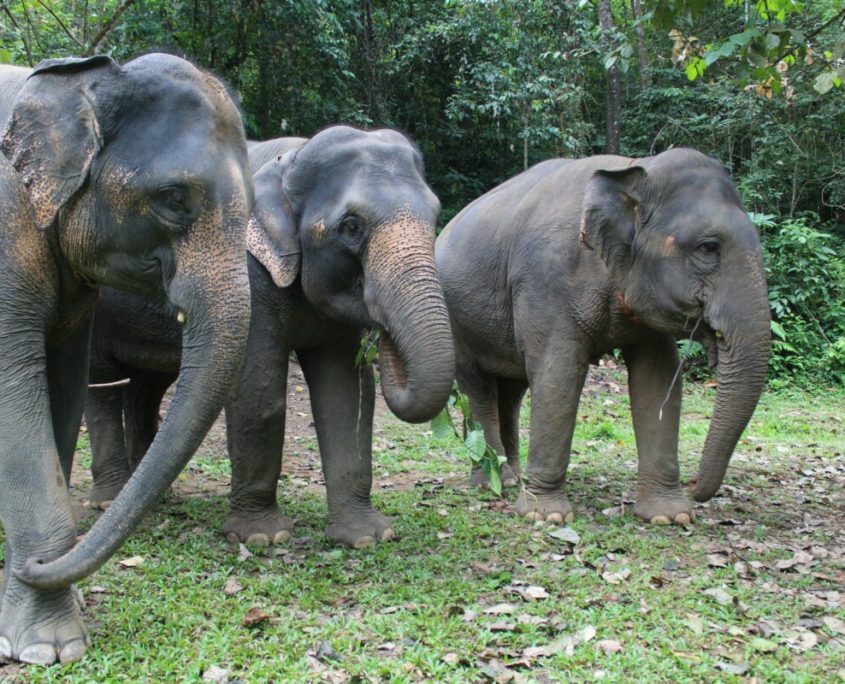My 6 Weeks as an Elephant Vet – Week Three
A blog by veterinary volunteer Vanessa Klabouch, a vet student at TiHo Hannover
16.01.23
Yesterday two new Volunteers from Korea arrived and today we went to Phuket together. We visited a 2-year-old Elephant baby (calf) that showed an outbreak of Papillomavirus (warts) a few months ago. At the time, the vet team treated her quite intensely and her mahout kept the wounds clean that had been caused by the papilloma pimples.
When we arrived, the little elephant was busy eating and when we checked the trunk and area around the mouth Dr. Aon said that it looked so much better than it did the last time. They showed us some pictures and it really does! So, we gave the mahout some more cleaner and provided Vitamin C for the calf to strengthen its immune system. We then set off to the next patient.
Papilloma warts are caused by a virus and are not common in elephants. The occur mostly in calves, especially the ones that didn’t drink enough milk from their mothers and are therefore lacking maternal antibodies. They are often found on the trunk, and may occur on the skin, mucosa, and oral mucocutaneous junction. Visually, one may notice that the elephant gets clumsy using its trunk and tries to scratch itself. First, they grow in number and size and then often fall of after some time and the skin starts healing.
Our second patient was a 58 year old elephant that weighed 2.3t and had a BCS (Body Condition Score) of 1.5 (out of 5). She was skinny and scratching herself constantly, Dr. Aon diagnosed her with lice.
Hämatomiezus elefantis, the elephant louse, is visible without a microscope and has a length of 3mm. They are bloodsucking and attach to the skin with an elongated proboscis; elephant lice have a “trunk” as well.
They are mainly found behind the ears and around the tail, cause itchiness and can be transferred through contact. You can treat them with Ivermectin subcutaneously, but the therapy has to be repeated because eggs, and nymphs inside the eggs, are not killed with one shot.
Dr. Aon took blood to check if there is an organic reason for her low weight or if it was just the result of a lack of food and too much hard work. She was given anti-parasitics and supplements.
After this visit we had a break, and enjoyed some lunch.
17.01.23
I stayed at the hospital today, to help Dr Mink with the medication stock. I went through the entire pharmacy, making notes of how many of each medicine was left. Dr Mink then input this into the system which shows the product, unit, source and amount in stock as well as the minimum needed at the hospital. This then ensures we know when we have to order new stock. Of course, it was interesting but not as exciting as visiting and helping the elephants!
18.01.23
Today’s visit was very reminiscent of our off-road action with Michael, during my first week with STEF. I have no idea where we were, it was all uphill through the middle of the jungle, over rocks, through rivers until our patient was finally in sight.
We were called out to take care of three logging bull elephants. They were generally in good condition, still young, really muscular, and huge. Between them they weighed almost 5t onto the scales. Two had gadfly infestations and one had a corneal lesion that required treatment.
Dr. Aon has done a lot of research on the subject, but the gadfly species has not yet been clearly identified. The collection of the individuals found on the elephants has not yet yielded any results, since the larvae do not correspond to the adult found on the elephant according to genetic determination.
The two elephants were given anti-parasitic and the eye patient got eyewash and drops which were given to the mahout to administer.
We then made our way to a large camp, where tomorrow we will be giving all the elephants an examination. Before relaxing for the evening, we gained a short overview of the elephants, ready for tomorrow. In the evening there was the classic Thai rain where you are drenched within a second. I kind of like it, its warm but refreshing and fun (if you don’t have to go back to work afterwards)!
19.01.2023
Today we had a typical sanctuary problem case: an elephant with colic but no chance to get close to him. These elephants are often not used to contact with humans, allowed to roam in their natural environment, sometimes fed treats by the tourists, but otherwise free to move. No enclosure, no chains, no training. So how should we treat such an elephant? An Elephant that is already panicking if it sees a rope, and then is supposed to keep still for an exam or IV? No chance.
It’s the perfect example where both sides have their advantages and disadvantages. Of course sticks and chains are not appropriate, but if an elephant knows them, he does not panic when he is fixed with them for a moment. It is wonderful to observe elephants in their natural environment without human influence but, unfortunately, such elephants cannot be treated easily.
As with horses and dogs, there is the possibility of adding another animal to calm the one that is supposed be treated, or to place a dominant one next to it so that the lower ranked one becomes calm out of respect for the dominant elephant, and can then be treated. But if that doesn’t work either, unfortunately we can’t do anything. It didn’t work in our case.
It is absolutely important that sanctuaries have medical training, and also give their elephants positive training instead of negative. For example, just fixing the elephants with a reward for a short time, let him raise the leg with a reward, make him give its ear, sit down, all of that, just to make treatments possible and less stressful for the animal.
Today we couldn’t come near our patient. Because the mahouts are changed too often in this sanctuary, our elephant unfortunately didn’t trust anyone. Nevertheless, we gave the mahout medication and we hope he manages to administer it to her. But that’s all you can do in these situations. We can only hope that the mahout will in future train the elephants for such cases.
20.01.2023
We received a very funny call this morning. A panicking mahout phoned to say his elephant had a catfish stuck in its trunk, apparently it somehow slipped in when she was taking in water. The conversation went back and forth, until the mahout was finally able to announce that she had sneezed/blown the fish out again!
At the time, we were already on our way to Krabi to visit 13 elephants for their general check-ups. All of them were fine. And after the general examination, the mahouts were provided with vitamins, deworming, wound treatment and so on. We then went further on to visit a logging elephant.

